
Articles
 Environmental news Environmental news |
 |
|
 Motorsport Development UK Motorsport Development UK |
 |
|
 Motorsport industry Motorsport industry |
 |
|
 Motorsport technology Motorsport technology |
 |
|
 Sporting regulations and results Sporting regulations and results |
 |
|
Motorsport - a sector case study where the UK leads
Author: DTI/SMMT
Source: Autoindustry
Publication Date: 1st March 1999
Introduction
The UK is the unrivalled leading world supplier of performance engineering technology, products and services to motorsport.
Nearly 4,000 companies form a thriving £1.5 billion (US$2.4 billion) a year UK motorsport industry which is rich in engineering heritage and next generation technological innovation.
They provide performance cars, chassis, engines, transmission systems and a host of other high tolerance products for almost every form of motorsport activity around the world.
Links between the UK industry and motorsport in the US are well documented through Indycar racing, in which UK companies make a unique contribution.
Now the UK is planning even closer collaboration . . .

Pole Position for UK Suppliers
Successes of UK motorsport companies tell their own story . . . British firms supply most of the advanced automotive technology used in Formula 1, which is technically the highest level of motor racing world-wide.
And the dominance of British-made cars and components in Indycar racing and other major racing formulae in the US confirms the already strong business links between the automotive sectors in the two countries.
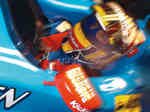 Much of the UK technology that is tested in the cauldron of the race track is also exploited by global car makers for mass market family vehicles.
Much of the UK technology that is tested in the cauldron of the race track is also exploited by global car makers for mass market family vehicles.
That's why UK motorsport firms - backed by a large number of specialist component suppliers - are developing ever closer relationships with the major OEMs.
UK high tolerance engineering was highlighted in 1997 when Thrust SSC (Super Sonic Car), designed and constructed by British engineers, broke the sound barrier and set a new world land speed record of 763 mph.
As we move towards the year 2000, British firms are being encouraged to boldly seize opportunities for new business in the lucrative American motorsport market and other auto-related sectors that exploit high performance technologies.
Chris Aylett, Chief Executive Officer of the Motorsport Industry Association (MIA), which represents the industry in the UK, believes UK companies already hold the key to the American market in the form of the enormous respect in the US for Britain's proven technological creativity and winning ways in the motorsport arena.
The MIA is due to open a North American office in 1999 to promote UK motorsport enterprise and help players in US performance racing and related sectors gain further access to Britain's high-tech automotive resources.
His organisation recognises that US motorsport is divided into numerous niches much larger in volume terms than anywhere else and which attract substantial income from sponsors, such as the Indy Racing League and Champ Cars, the two major single-seater formulae.
He says: "Performance engineering is an international product and US teams can only afford to be associated with the best performance, because sponsorship only goes to the winners.
"Buyers want to buy the best and if British companies offer a product that achieves their goals, they will buy it. It is all about high-tech, cutting edge innovation. . . they want us to go to them with the very latest ideas.
Price is not a factor if what they buy gives them a performance advantage. In reality, there are no barriers to British firms in the US."
He believes that further opportunities for US and UK companies to work together exist in a number of key, niche motorsport markets where British firms are already prominent. They are:
- Indycar racing - the Indy Racing League and Champcars, plus the Indy Light feeder series - where British-built cars dominate.
- Nascar motorsport, where a whole range of UK products - brakes, brake discs, plumbing, instrumentation, telemetry, data logging - are in high demand by the saloon and stock cars racing teams in these highly-popular events.
- Heritage motorsport, the restoration of classic European and British specialist vehicles - British engines, chassis, bodies and other components have already gained a big market share.
- The $17 billion (£10.6 billion) a year US speciality aftermarket, which supplies appearance and performance-enhancing motorsport products to the mass consumer market and where UK firms have the chance to win more business, based on their on-track credibility for success.
And beyond motorsport, there are increasing opportunities for UK companies to develop business links with US volume car-makers and suppliers that seek to harness high performance technology and systems developed in motorsport for consumer market vehicles.
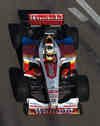 UK businesses supplying the booming racing industry employ 150,000 permanent and part-time staff with high levels of skills. They range from firms building and running competition cars, producing engines and transmissions, to a network of specialist, highly-skilled component sub-contractors capable of delivering innovative technology to the same ultra-tight deadlines as the principal companies in the sector.
UK businesses supplying the booming racing industry employ 150,000 permanent and part-time staff with high levels of skills. They range from firms building and running competition cars, producing engines and transmissions, to a network of specialist, highly-skilled component sub-contractors capable of delivering innovative technology to the same ultra-tight deadlines as the principal companies in the sector.
"It means a technical product used in one race meeting can be redesigned, redeveloped, rebuilt and sent out again in a week. The UK motorsport sector has 100 years of engineering heritage and knowledge, with a modern culture driven by the Formula 1 teams," says Chris Aylett.
The industry spends over 25% of its sales turnover on R&D - absolutely essential to remain at the cutting edge - compared with the national engineering average of only 2.9%, and invests heavily in state-of-the-art equipment, including CAD/CAM.
Mr Aylett says UK firms have proved they have the skills, adaptability and processes to deliver non-standard, advanced technology and short-run products.
There are clear opportunities for British motorsport technology in the mainstream automotive market, which has much closer links with high performance racing than is generally realised.
Much of the technology designed and developed by UK suppliers is ultimately exploited by the mass automotive market. Many advanced features refined for the race track are now found as standard on modern family saloons.
Technology transfer of this kind includes ABS brakes, turbocharging, fuel injection, road tyre technology, traction control systems, semi-automatic gearboxes, brake pad materials and active suspension.
"Every major car company in the world has a very substantial investment in motorsport performance engineering. One aspect is brand marketing, but the other is to gain access to the R&D that will help them develop lighter, more aerodynamic and more fuel efficient vehicles for the volume market. The OEMs would not invest as heavily in motorsport if it did not give them access to these spin-off benefits."
British firms, though, are cautioned not to be ill-prepared when they seek access to US business.
They are advised to get a full understanding of the technical regulations that apply in motorsport and in the US automotive market generally.
They need, too, to be cautious about pricing and methods of distribution when discussing potential business with a customer. He says: "Setting your price on the basis of supplying, say, 1,000 units of a particular product could cause problems if you end up talking to someone who is looking for a million units. You must do your homework."
And he warns that businesses operating in performance motorsport - by its very nature - have a high "death, attrition and growth rate" because the demand for technical innovation is so high.
Mr Aylett, though, insists that British firms should seize the opportunities that exist. "The Americans like people who really produce the goods and don't just talk about it."
Contact: Motorsport Industry Association, Federation House, Stoneleigh Park, Warwickshire CV8 2RF
Tel: +44 (0) 1203 414999
Fax: +44 (0) 1203 414990
Email:

Pointers to follow
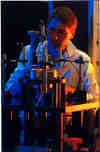 British firms seeking access to the US motorsport arena need to carry out extensive research to carefully target a particular niche in both market and geographic terms.
British firms seeking access to the US motorsport arena need to carry out extensive research to carefully target a particular niche in both market and geographic terms.
This is essential because US motorsport is regional, with different types of racing going on in each region. The market is huge compared with the UK with, for example, over 9,000 racing cars operating in just one of the US racing formulae.
MIA's Chief Executive Officer Chris Aylett recommends UK firms to use the British consular offices in the US as a starting point for information about motorsport and related opportunities, together with help from the MIA, which will put them in touch with members with US business experience for expert guidance.
Firms can assess market opportunities by attending one or both of the major annual shows that will give them a real flavour of US motorsport. Both take place in November.
One is the Performance Racing Industry (PRI) show in Indianapolis, a "hard-core" annual event exhibiting performance products that attract race suppliers and race teams.
The other is the annual Speciality Equipment Market Association (SEMA) show in Las Vegas that deals with the huge motorsport performance aftermarket.
It attracts major multi-national retailers and wholesale distributors of performance and appearance-enhancing products developed initially for motorsport and then mass-produced for retail sale.
They include such items as special steering wheels, spoilers and alloy wheels that motorsport fans have seen in use during race events and that they want on their own vehicles.
Chris Aylett believes British firms could do more to tap into this lucrative spin-off aftermarket trade. The rewards are handsome; some companies have multiplied their turnover tenfold and more in three years.
The MIA works closely with SEMA and PRI and plans to take groups from the UK to both shows in 1999 and in following years.

Indy Car or Formula 1
Formula 1 is the technical pinnacle of world-wide motorsport with Champ Cars and Indycar racing undoubtedly the highest level of performance motor racing in the United States. Each tests advanced vehicle systems up to and beyond their limits . . . and both are dominated by British-built cars.
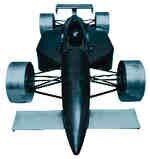 Seven of the eleven Formula 1 teams in the world are based in the UK and during 1998, when McLaren won the World Championships with a Mercedes Benz engine built in the UK, all but six of the cars on the starting grid had been designed, developed and built in Britain. British equipment, though, was used in all the cars taking part.
Seven of the eleven Formula 1 teams in the world are based in the UK and during 1998, when McLaren won the World Championships with a Mercedes Benz engine built in the UK, all but six of the cars on the starting grid had been designed, developed and built in Britain. British equipment, though, was used in all the cars taking part.
The UK-based Formula 1 teams are Williams, McLaren, Benetton, Arrows, Jordan, Stewart and, recently, British American Racing. Honda, which is launching its own Formula 1 race team, has started its F1 activities in Brackley, UK.
It is a similar success story in US Indycar racing. For many years almost all the leading cars in the two single-seater formulae - Indy Racing League and Champcars - have been designed and built in the UK and exported to the US, including their engines.
And cars built in the UK have been virtually unbeatable in the Indianapolis 500 - the premier annual event in the Indycar calendar.
British cars first won this race in 1965 and succeeded again in 1966. Since then, cars built by British companies have an exceptional record of success, having won 14 out of the last 15 years.
These successes also extend to other racing formulae that act as a ladder to the highest levels of motorsport. UK firms are prominent, for instance, in Indy Lights, Formula 3000, Formula Ford, world rallying, touring car racing and grand touring events, including the Le Mans 24 Hours.
Many of the UK motorsport firms are based in an area north and north west of London towards the English midlands that has become known as "MotorSport Valley."
The incisive inroads made by British precision engineering technology into hard core American motorsport is all the more remarkable for the fact that Indycars have significant technical differences to Formula 1 vehicles, although they are outwardly similar.
 Formula 1 teams build their own cars, while Indycar teams buy theirs "off the shelf". They have turned to UK technology in the knowledge that British firms fully understand the sport's specific requirements and deliver competitive cars at reasonable cost to extremely demanding schedules.
Formula 1 teams build their own cars, while Indycar teams buy theirs "off the shelf". They have turned to UK technology in the knowledge that British firms fully understand the sport's specific requirements and deliver competitive cars at reasonable cost to extremely demanding schedules.
Three British firms in particular, March, Lola and Reynard, have shared in the UK's Indycar successes. The latter two began 1997 with order books for a combined 50 Indy cars. Reynard also builds cars for the US Barber Dodge Pro series.
Even the largest US Indycar racing team, Penske Cars, has been based in the UK for 20 years because it regards Britain as a one-stop-shop that provides all the technology, products and expert services it requires.
Engines built by Cosworth and Ilmor Engineering have powered most of the Indycar winners and another British firm, G Force, the company behind Thrust SSC, won the Indy 500 at its first attempt. Ilmor, together with Reynard and other UK firms, now have substantial US operations.
Cosworth Racing, which has been bought by Ford for £40 million (US$64 million), is one of over 100 British companies that build or prepare engines for competitions.
Its racing engine development division also produces power units for Formula 1 and other types of motorsport.
Zytek Automotive was awarded the contract by the FIA (motor racing's governing body) to supply engines to the International Formula 3000 Championship. The Brian Hart company produces the Yamaha Formula 1 engine.
British high tolerance engineering and products excel too in other forms of motorsport in many parts of the world, such as world rallying, which uses cars based on standard models and is an important brand recognition tool for volume car-makers.
Japanese manufacturers Subaru, Nissan and Mitsubishi all have rally cars prepared by British companies.
Subaru's cars are prepared and entered by the British firm Prodrive and are regular winners of World Rally Championships.
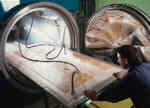 Mitsubishi cars are prepared by Ralliart and are the 1998 World Rally Champion and mighty Ford uses M-Sport for its rally cars.
Mitsubishi cars are prepared by Ralliart and are the 1998 World Rally Champion and mighty Ford uses M-Sport for its rally cars.
The British Touring Car Championships, involving race-prepared versions of volume-market vehicles, is another example of how global OEMs exploit high performance motorsport. Ford, General Motors Europe, Nissan, Renault and Volvo all base their competition cars in the UK.
One of the biggest UK racing car makers is Van Diemen, whose vehicles have regularly won Formula Ford races and which produces vehicles for racing in countries such as Australia, Sri Lanka, the US and Venezuela. Another UK firm, Swift, is also prominent in Formula Ford.
Ricardo, which designs and manufactures transmissions, axles and differentials for all forms of racing and rallying, also provides transmissions engineering technology and consultancy and vehicle and chassis engineering to major vehicle makers and OEMs worldwide.
Lola Cars builds chassis for Formula 3000, one step below Formula 1, for the US Indy Lights Championship and for the Japanese Formula Nippon series.

 Back to top
Back to top
The Fastest Car on Earth
Cars built by the British company G Force Precision Engineering have roared to many high performance triumphs, but one particular vehicle it made has out-performed them all . . . Thrust SSC, the Fastest Car on Earth.
The supersonic car broke the sound barrier and set a world landspeed record of 763.035 mph in the Black Rock Desert of Nevada in 1997.
Thrust SSC was built at the company's English HQ and its spectacular achievement occurred in the same year that G Force cars were enjoying big successes in US Indycar racing - making it a year to remember for a company with performance engineering skills in its blood.
It has taken under a decade for G Force to progress from its small R&D roots to become a leading name on the Indycar circuits of the United States.
Its biggest successes came after it was chosen as one of only two named manufacturers for the new Indy Racing League (IRL). G Force cars won the first six championship places in their debut IRL season in 1997, claiming 20 of the 24 podium positions. The G Force chassis also won the first three places in the Indianapolis 500, the spectacular highlight of the series.
Indycar triumphs continued throughout 1998 and the company is now one of the most prominent production and component manufacturers for both the IRL and Champ Cars. Among its current projects are a contract to build race cars for the Japanese Formula Nippon series and sub-contract work with Nissan for the 1999 Le Mans.
G Force operates from a modern factory in the south of England and has US facilities to support its motorsport activities in Golden, near Denver, Colorado.
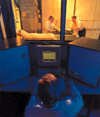 The company was set up in 1990 to give R&D support to the US Chip Ganassi Indycar team, and its order book expanded with work for Formula 1 teams such as Ferrari, McLaren, Benetton and Williams, and teams in Le Mans and touring car events.
The company was set up in 1990 to give R&D support to the US Chip Ganassi Indycar team, and its order book expanded with work for Formula 1 teams such as Ferrari, McLaren, Benetton and Williams, and teams in Le Mans and touring car events.
The scale of its in-house production facilities expanded to encompass all essential manufacturing processes after it began operating independently and formed a new company, G Force Composites Ltd.
The new company handled projects, such as the body and components for a Ford concept car, the Ford Indigo, but it also gave G Force the capability to work with new composite materials for motorsport car bodies and components.
G Force specialises in high tech carbon composites, which give very high levels of structural strength and can be moulded to any shape. James Morton, Director and co-owner, believes composites technology is being driven by motorsport applications and, along with other motorsport technologies, is expected to transfer into the mainstream automotive sector. "In terms of safety, for instance, there are huge advantages created by motor racing technologies such as composite materials that allow people to survive accidents that they could not have survived 15 years ago."
A large number of disciplines are essential to make a modern racing car - including design engineering, production engineering, fabrication, machining, electronics and complex components among them, in which British companies such as G Force excel.
G Force believes UK motorsport firms have a depth of experience and a capacity for invention and lateral thinking that is more powerfully expressed in motorsport than anywhere else. "British people work better in teams than in other countries and there is a much better esprit de corps in a unit of people that understands exactly what it is their customer wants - rather than what they want."
Director and co-owner Simon Kingdon-Butcher attributes G Force's rapid success to the quality of its staff and high standards of workmanship in its product.
For the Thrust SSC project, G Force was selected initially to build the wind tunnel model for aerodynamic testing of the vehicle, but eventually the 54 feet long car was built at its factory.
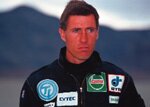 G Force also had considerable design input into the vehicle and supported the Black Rock Desert project, where Squadron Leader Andy Green became the first person in history to break the sound barrier on land. The "tremendous" one-off project did the company's reputation a power of good.
G Force also had considerable design input into the vehicle and supported the Black Rock Desert project, where Squadron Leader Andy Green became the first person in history to break the sound barrier on land. The "tremendous" one-off project did the company's reputation a power of good.
G Force has also handled aerospace and marine contracts, including components for one of Richard Branson's balloon projects, America's Cup racing yachts and a helicopter project.
Although G Force's US experience is chiefly in motorsport, it advises British firms trying to access the mainstream North American automotive market to appreciate the US business culture. "It is essential to establish eye to eye contact and to listen, because Americans love to chat about what they have achieved and tell you where they're coming from. We find them delightful to deal with . . . on the whole they are absolutely straight."
John Biddlecombe, Managing Director and co-owner, adds that from his experience, business Americans can also be tough to deal with, but can make up their minds very quickly. Nor should UK business people expect a great deal of loyalty. "In motorsport, long term relationships are a rarity - everybody is looking for an edge because nobody wants second best."
Contact: G Force Precision Engineering, Denmans Lane, Fontwell, Sussex BN18 0SU
Tel: +44 (0) 1243 544192
Fax: +44 (0) 1243 544488
Email:
Website: www.gforceracing.net
Added to the database on 18th September 2001
Keywords: motorsport, UK,
